Interview: Oscar Nominee Arianne Phillips
 Saturday, February 18, 2012 at 3:10PM
Saturday, February 18, 2012 at 3:10PM It's long been my goal to up the visibility of the craft of costume design here at The Film Experience. So when the W.E. team was making the press rounds, I jumped at the chance to talk with Arianne Phillips, who has long been a designer I admire both for her technical and visual invention and for her uncanny ability to hit the pop cultural bullseye with instantly memorable looks whether she's designing for musicians (including longtime collaborator Madonna) or for actors. Her film career took off with the one-two comic book punch of The Crow (1994) and Tank Girl (1995). And it's continued to fascinate through Hedwig and the Angry Inch and on to her first Oscar nomination for Walk the Line (2005).
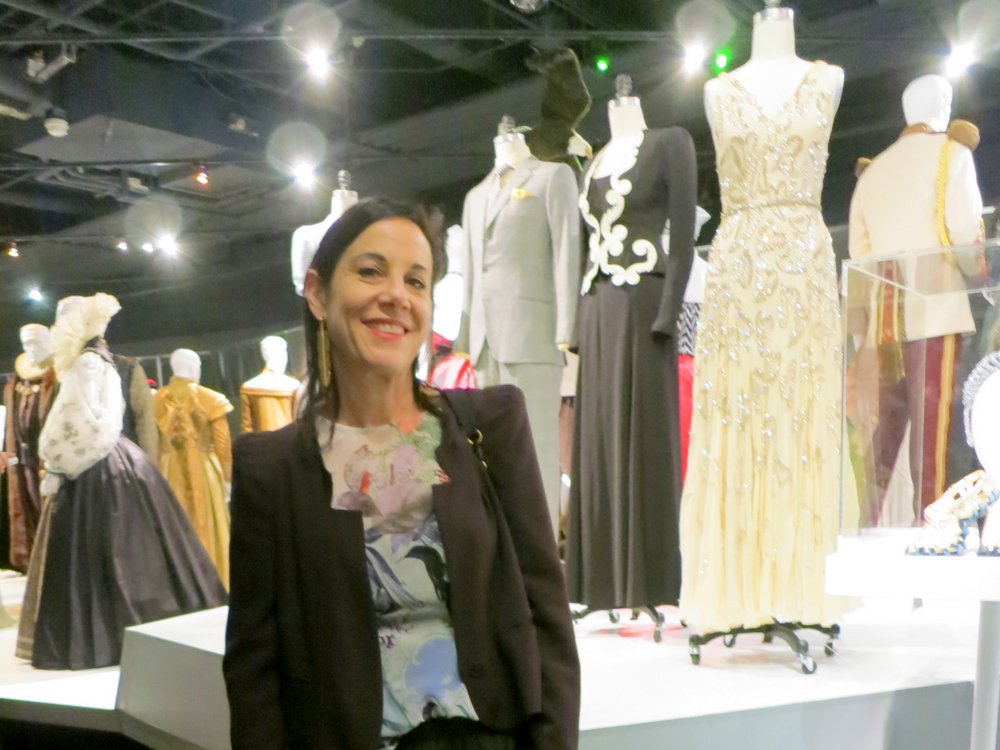 Arianne Phillips in front of her W.E. costumes. Photo via Society News
Arianne Phillips in front of her W.E. costumes. Photo via Society News
She received her second nomination last month for W.E. (2011) which has an absurd amount of use for her skills. In my mind they really ought to have done away with typical star "billing" and listed Arianna Phillips up top. No disrespect intended to Abbie Cornish and Andrea Riseborough, who lead the picture through its double-sided narrative.
Years before W.E. materialized Phillips has been living her own double-sided career "by design". Arianne speaks with a mixture of confidence, sincerity and appreciated bluntness: she agrees that costume designers don't get enough credit calling it an "a gorllina in the room. It's such an annoyance" but she corrects my slight misunderstanding about her past collaborations with musicians. She freelances as a stylist and editor for print photography, concerts and music videos. She doesn't dress stars for events.
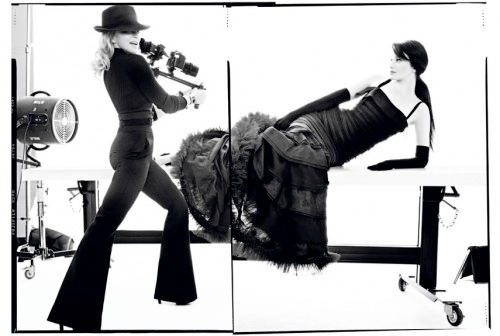 a recent Madonna/Riseborough photoshoot styled by Arianne
a recent Madonna/Riseborough photoshoot styled by Arianne
I do videos and album covers, mostly narrative based: fantasy, illusion and character. It's very connected to film. You're creating the fantasy of who that person is.
-Arianne Phillips on her second career as a fashion editor and stylist.
Continue for... Madonna, Larry Flynt, Biopic & Concert Tour Challenges
What follows is most of our conversation. For ease of reading, I've edited out our doubled simultaneous interruption when I became tongue-tied trying to ask about Madonna (the curse of über fandom) just as Arianne's dogs started barking. But chat about Madonna we did. As well as The People vs. Larry Flynt, 3:10 to Yuma, and adjusting your designs to suit specific actors...
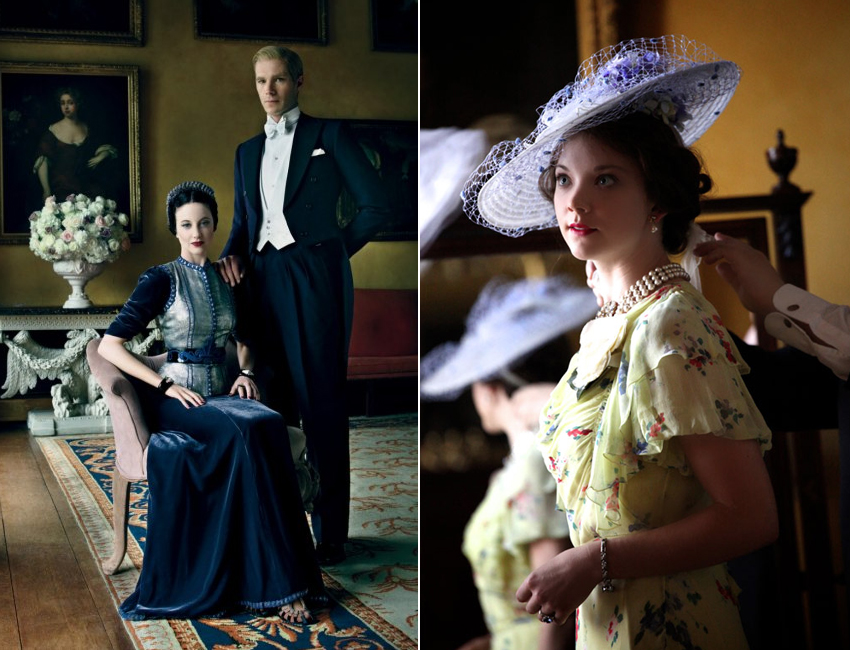 For Your Consideration... do you think W.E. has a shot at winning Costume Design?
For Your Consideration... do you think W.E. has a shot at winning Costume Design?
Nathaniel: Watching W.E. I kept asking myself "Is Madonna trying to break Evita's record for most costume changes in a movie?"
ARIANNE PHILLIPS: I know! Any biographical film -- I've done a couple like Walk the Line and The People Vs Larry Flynt are usually telling a story over a period of time. So what better way to illustrate that time passage than costume changes and hair and makeup? It's just kind of inevitable with the construct of these kind of films. I don't think Madonna and Alek Keshishian when they were writing the script were aware of the hungry machine a biographical film can be for costumes changes. It became one of our inside jokes. She kept saying 'oh my goodness, my next film is going to be two people in a room!'
NATHANIEL: Ha! Yes, it's pretty epic in terms of your job.
ARIANNE: It's a monumental effort and one that I look for when I make choices about what kind of films I'm going to work on. It's a dream for a costume designer because you're really moving the story. You have an opportunity with the costumes to really set the time and move the story along.
With biopics you've got to be concerned with historical accuracy and visually storytelling and what may or many not work for the actors. How hard is all of that to balance?
Well it's part of my job. The most important thing is that you're making a narrative film for entertainment purposes. We're not making a historical docudrama. My process is I steep myself and bury myself in as much research as I can get my hands on and just absorb and absorb. And then, you know, often the actor is not the same physicality as the real person so you have to figure out cinematically how far you want to take that whether it's hair and makeup transformation or physical transformation to make someone appear thinner, larger, taller, shorter, whatever it is. There are all kinds of tricks we use, whether it's in costume or the way the film is lit. We always have a cinematic point of view on how we want to tell the story. For me, I try and become as fluent as I can in who these characters truly were and all the authentic facts. When I meet the actor there becomes a synergy. In the fittings is where we really figure out where our throughline is to the character. Sometimes there are choices we make that are more appropriate to that actor's physique or how they want to work or what will be more interesting photographically. But it's always based on a reality, especially this kind of a film.
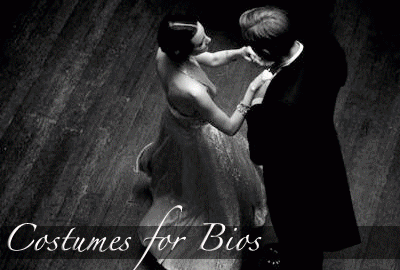
ARIANNE PHILLIPS: But we're making a film for entertainment purposes. When I was working on The People Vs Larry Flynt which is one of my first film, I had a meeting with Larry Flint himself which is the benefit of working on a biographical film about a person who is still alive because most of the time it's after they've passed away. Larry Flynt was showing me home photos because I was curious about what he was wearing in the 70s and early 80s. He said to me 'Look. I understand you're making a film. Do what you need to do to make it interesting.' So, I appreciated that and that's kind of how we approach it.
Nathaniel: I love those moments in film where it seems like the costume unlocks the character. I'm thinking of 3:10 to Yuma -- that famous jacket and the color palette on Ben Foster, the movie just takes off with that it was so great.
Thank you! 3:10 to Yuma was a huge challenge because it was all about aging and character. I learned a lot about how costumes need to speak in terms of texture. I loved New Mexico. I had so much fun working on that movie. The actors were amazing to work with.
I always wondered if Foster would have had the same performative energy without that costume. Have you ever had actors tell you 'this costume made a difference for me'?
Sure I have. And I know that my job as a costumes designer is to create character, inform tone and feeling and the look of the film. But also I believe costumes have a second function and that is to help inform the actor. Costumes can be tools for actors to access the character. There's a visceral tactile side to how a costume feels on an actor that can help them or kind of catapult them to that time and place.
There are a lot of actors who work that way. Some actors don't at all. Actors can be so busy. One of my first experiences was working on Tank Girl. Malcolm McDowell, who I was really excited to work with, I had to fit him shortly before he worked because he was so busy on another film. He came to the fitting and he was really appreciative. He said 'I haven't had time to do my research. I've been on another film and this has really helped me tremendously to figure out my character and have an angle on my character.' That made a huge impression on me along with many cues about an actor's relationship to costumes.
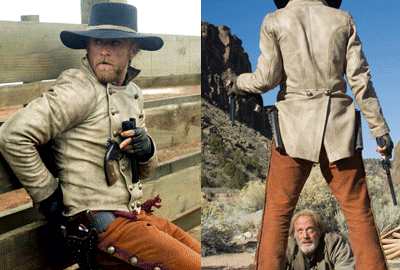 Character / Actor / Costume
Character / Actor / Costume
ARIANNE PHILLIPS (cont'd): One I read in a book from Uta Hagen, I think, "Respect for Acting" when I was in high school (at one time I was interested in acting and community theater). Laurence Olivier said that he always started with his characters from the shoes up and that really resonated for me. I think about it all the time. It's true of a lot of English actors that they work on the physicals. Andrea Riseborough is one of those actors. I didn't talk to her about her technique but she's a great physical actress and when we were doing fittings she held herself in a different way. she was channelling Wallis Simpson, her posture changed, the way she walked. She did her hair and makeup herself for the fittings. That's a big part of her process. That's a dream scenario for me to be able to collaborate with the actor.
But some actors it makes no difference. It's not part of their process and they're just fine with whatever you do. It depends. Every one has their own private -- and sometimes not so private -- way of approaching their character and their own process.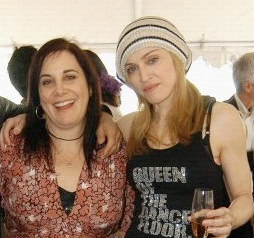 Arianne & Madonna ~ a decade plus collaborationYou've had a hand in so many of Madonna's great iconic looks. That's been a long and fruitful collaboration.
Arianne & Madonna ~ a decade plus collaborationYou've had a hand in so many of Madonna's great iconic looks. That's been a long and fruitful collaboration.
It has. Everything she does is iconic but thank you.
Do you have a shorthand with her now?
Absolutely. It's my most long term relationship. I mean fourteen years in a world of freelance? That is a lifetime. I think we have a similar sensibility and a similar communication style as well as aesthetic. We have definitely created a shorthand over the years and mutual understanding. I can understand a gesture. I can understand so much because I've worked with her in so many different capacities. But it doesn't keep me less on my toes. I mean she's constantly evolving as a woman and as an artist. She's definitely always bringing some new challenge which is what's kept me there, really. She's very very brave. She steps out of her pop star role to stretch herself as an artist, for instance being a director on this movie.
It's been an incredible journey, as you can imagine, to be there and watch her evolve and keep pushing herself. It's very inspiring. It's not like I'm doing anything different. I mean I get to do different things, different disciplines whether it's a tour, video, photoshoot, play, film -- it keeps changing for me but she's the one pushing herself. It's really, really great.
An image popped into my mind as we've been talking about this. Her sleeves stretching all across the stage in the the Drowned World tour. Do you remember that?
 Photo via Madonna Underground
Photo via Madonna Underground
Yes, of course! That was a costume idea that I thought of.
It translated into such an epic moment on that tour.
Thank you. I thought so, too. It was a nightmare that I thought it up! Sometimes you have these great ideas and then you have to make them work. A lot of engineering went into that.
How much do you have to work with other departments on technical things or in general with costume design?
Always. Always. On that same tour Madonna and the dancers were also suspended by wire in the flying section. That same section. There are always a lot of challenges when you are trying to think outside of the box, using your imagination and pushing yourself.
I've chosen a career that's about collaboration by choice and not a painter or writer working alone in a room. My job is better and reaches new heights based on the collaboration side. That is intrinsic in the job and why I love my job so much.
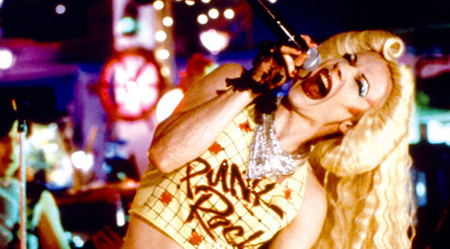 Hedwig!Which films are you most proud of?
Hedwig!Which films are you most proud of?
Hedwig and the Angry Inch, The People vs. Larry Flynt and 3:10 To Yuma. Those movies I hold really dear. They really helped the trajectory of what inspires me and what challenges me.
And then of course W.E. which was a beautiful world to live in in terms of the jewelry, the fashion and the romantic side. And being able to work alongside Madonna on the other side of the camera. That was a real treat and something I've wanted to do for a long time.

Related:
Meeting Madonna | Costume Articles | Oscar's Visual Categories



Reader Comments (5)
She's an idol for me. Great interview. Her work in film is so great. I also love what she does on Madonna's tours. She's had a huge hand in making them successful.
I always love these interviews with the technical professionals. I would love to hear what Sandy Powell has to say on her career
I think we all wish we could own an outfit as sexy and flattering as Madonna's equestrian number from the Confessions Tour.
Phillips' work in WE is stunning. I had no idea in 2009 that Madonna's own directorial sensibilities would be so similar to Tom Ford's—which makes your suggestion that she could've worked the shit out of Julianne Moore's part in A Single Man even more titillating. It's almost too awesome to imagine—and only Madonna could leave me "what-iffing" Julianne's flawless performance.
Madonna's 2012 dancers should wear FU e=fu8 Underwear on her new tour.
Yes, the waistband says FU e=fu8, see http://fuunderwear.com
magnificant work by Arianne Phillips for Madonna's W.E. she really deserves the Oscar for best achivment in costume design.